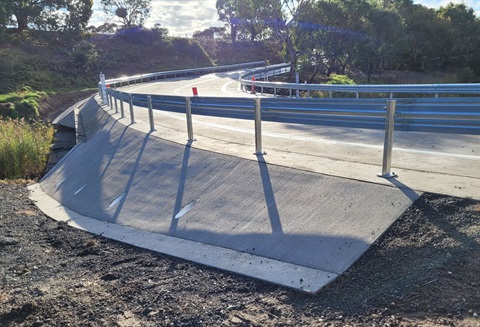Newborn babies who need resuscitating at birth could benefit from CPR while their umbilical cord is still attached, according to new research.
The discovery by Hudson Institute researchers could change the way these babies are treated worldwide.
Current practice recommends that babies requiring CPR at birth, including respiratory support, chest compressions and adrenaline administration, undergo immediate umbilical cord clamping.
However a new discovery, published in the journal Frontiers in Physiology, found delaying cord clamping for up to 10 minutes after CPR may reduce brain injury. The finding was in pre-clinical models and is yet to be verified in newborns.
“We investigated in pre-clinical models whether it was possible to do CPR while the newborn was still attached to the umbilical cord and whether that provided any benefits,” said first author, Associate Professor Graeme Polglase.
“We found that it was possible to do CPR while the umbilical cord was still intact, and if cord clamping was delayed, it may reduce injury to the brain,” he said.
“Our main finding was that performing CPR with the umbilical cord intact, and then delaying cord clamping for up to 10 minutes, prevented a large overshoot in blood pressure and flow to the brain, which likely reduces bleeding.
“If this finding is replicated in future clinical trials it could alter the way newborn babies requiring CPR are treated worldwide,” Prof Polglase said.
Clamping the umbilical cord too early may increase the risk of brain injury in babies that need substantial help to survive at birth.
Prof Polglase said additional funding had been secured from the Cerebral Palsy Research Foundation to undertake investigative studies in severely oxygen-deprived babies in Kilifi, Kenya. The developing world is where the majority of these babies are born.
The World Health Organisation estimates about nine million babies are born starved of oxygen each year, with about one million of these dying.
This is the second greatest cause of neonatal deaths worldwide. Those that survive have very high rates of brain injury and neurodevelopmental problems, including cerebral palsy.
One of the major causes of this injury is due to bleeding in the brain once a baby’s heart starts beating again after CPR.
“We believe that preventing that from occurring will reduce brain injury in this population, improving outcomes for the millions of babies born starved of oxygen each year,” A/Prof Polglase said.
In a breakthrough discovery in 2013, Professor Stuart Hooper and A/Prof Graeme Polglase demonstrated that delaying cord clamping until after babies start to breathe is critical for maintaining cardiac output and oxygenation in newborn babies after birth. These findings have led to changes to national and international guidelines to consider the respiratory status of newborns before clamping the umbilical cord.
Facts
- Birth asphyxia is a result of a newborn being deprived of oxygen for long enough during the birth process to cause physical harm, usually to the brain.
- Babies with mild or moderate birth asphyxia may recover fully. Babies who have long periods of asphyxia may develop permanent injury, which could affect their brain, heart, lungs, kidneys or other organs.
- More than five per cent of newborns born worldwide need help breathing immediately after birth.
- Worldwide, more than 1 million newborns die annually because they do not breathe well after birth.
- The majority of newborns that die are born in developing countries. These babies are typically born at full-term and would have likely responded well to rapid resuscitation.
Collaborators Monash University, University of Edmonton, Royal North Shore Hospital (Sydney), King Edward Memorial Hospital (Perth), Leiden University (The Netherlands).
Funders NHMRC, National Heart Foundation of Australia.








